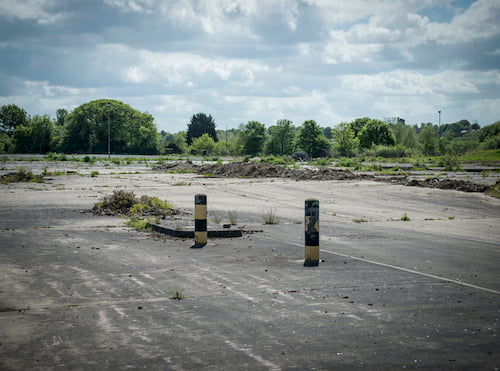Taking on the Brownfield Challenge
Usually, it’s easy to identify sites where new homes are going to be built. The Photoshopped hoardings are a bit of a clue. In fact, in some parts of the nation, ‘COMING SOON – 2, 3, 4-BED’ billboards have become almost as familiar as the sky above them. It is much, much harder to spot the ‘end of the rainbow’ plots that are still waiting for Land Consultants, Agents, and Developers to put their bids in.
We need at least 300,000 new homes to be built across the UK, every year, just to keep up with demand. That’s the government’s view, anyway. Finding the locations for those homes was once a fairly straightforward exercise. Open a map, run a search to isolate the empty polygons, send in a survey team.
However, today – when we start factoring in the logistics for construction itself, the socio-economic considerations for services, the views of existing residents, opposition from local groups and campaigners to construction in the region, the ever-decreasing parameters of Local Development Frameworks, let alone the spiralling cost of bare earth … it starts to look like an impossible task. Land Agents certainly earn their fees.
Land consultants are invaluable thanks to the knowledge they accrue over time. Their contacts have insights worth their weight in gold, and many of those consultants have developed something of an instinct for exploring what might otherwise be called ‘creative solutions’ in the search for land suitable for construction. In theory, brownfield sites fall into this category. But ‘creative solutions’ isn’t an ideal category heading if you’re an Agent in search of viable options.
Setting your own parameters
Size. Availability of transport connections and existing infrastructure. Proximity to utilities and services – distance from verified contaminants, or artefacts with archaeological, ecological, or historic value – what do you search for, to make a site viable? Proof that it was once acceptable to have a building there previously?

Land Consultants and Agents are under pressure to reappraise their thinking, and to come up with yet more suitable alternatives. House builders don’t like developing land that’s had industrial application on it, as the costs in getting to such a site may be (comparatively) prohibitive. In contrast, the same logistics and construction on open land can be relatively inexpensive – but as land is in short supply overall, those same brownfield sites are growing in appeal.
The Campaign to Protect Rural England (CPRE) notes that potential brownfield sites have been identified with room for more than 45,000 homes so far – with more than 2,600 new sites identified in the past year.
Some of those will have been deemed viable because they’re making excellent use of abandoned small sites that pose a multitude of problems for (local) residents: people who’ll be relieved to have derelict buildings taken down and, in their place, a few new much needed homes. Others are simply making good use of land that’s fallen out of favour.
Still, the search for more options continues. And this means searches can no longer focus on the ‘obvious’ parameters. They need to be made using viable, flexible variables. That’s the Brownfield challenge, and this is one of the reasons why we are creating SiteFinder…
Latest News

Future-proofing Assets Against Flooding in Britain
A recent investigation by The Guardian has revealed a sobering reality: millions more properties across Britain are now at risk of flooding as climate change intensifies. This makes it more crucial than ever to act - and to ensure those actions are guided by reliable, high-quality data.
Read Full Article-
Why address data is the unsung hero in the UK’s new-build recovery
Read Full Article -
Decoding the OS National Geographic Database: A Game-Changer for Utilities
Read Full Article
